General Electric 45 / 50-Ton Locomotives |
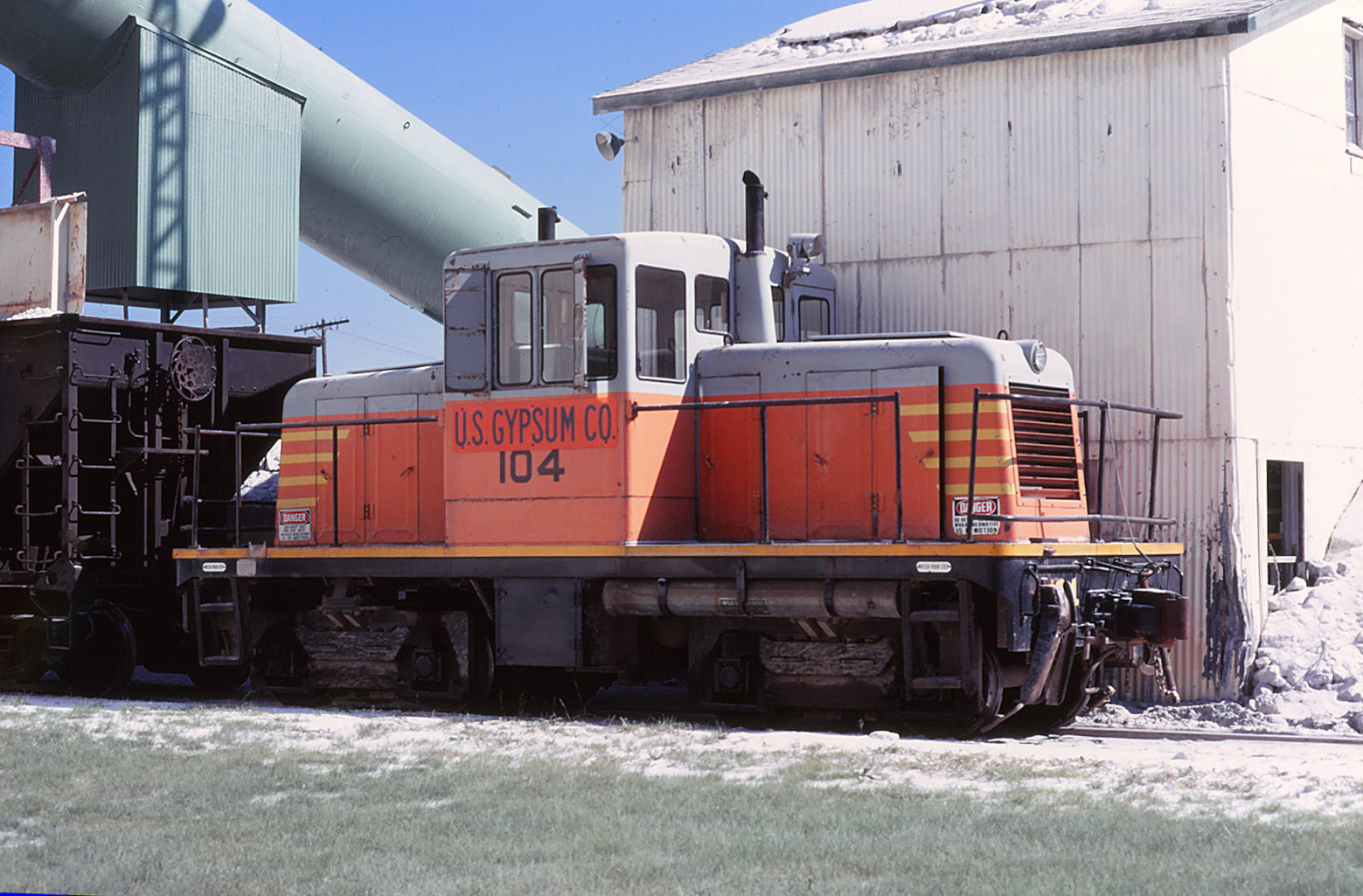
U.S. Gypsum 45-Ton #104 at Alabaster, Michigan on 24 May 1967 -- R. Craig Rutherford photo |
General Electric's 45-Ton locomotive was designed primarily for industrial users, as such
the federal government's "90,000 Pound" law of 1937 had no applicability. The earliest version
of the four-axle locomotive was built in 1939 and featured a thin-plate frame and two side-rod
trucks; it weighed 43 tons. The following year, the builder standardized on a thicker
frame for center-cab switcher construction in the 44-ton to 80-ton range. It should be noted
that the 45-ton model was the only GE locomotive to commonly feature side-rod driven trucks
which employed only a single traction motor; buyers of later 45-ton versions had the option
of internal chain-driven trucks. As the locomotive model evolved during the production,
period, a number of subtle changes occurred. Some of the revisions are identified herein later.
The number of access ladders and their placement was often a customer preference, thus they
are not a reliable spotting feature.
Total GE production of the 45-tonner reached slightly less than 350 units; the first of the
360-400 horsepower models appeared late in 1940. During WWII, a large number of 45-tonners
were gobbled up by the U.S. Military, including many with "drop-cabs" for low clearance.
The 50-tonner can sometimes be more difficult to determine. Early versions of the model
employed a narrow metal frame skirt between the trucks. In later years, the frame skirt was
lost and a thin bedplate added beneath the hoods and cab footprint. The side-rod trucks were
common-place, but not exclusive.
Here are a few tips on how to readily identify GE's 45/50-ton industrial switchers. Please
note the years of production are arbitrary and provided only as a means of categorizing various
models.
|
Time Line & Features of
43/45/50-Ton Center Cabs(Dates are approximate)
|
Early 50-Ton (Prior to 1939)
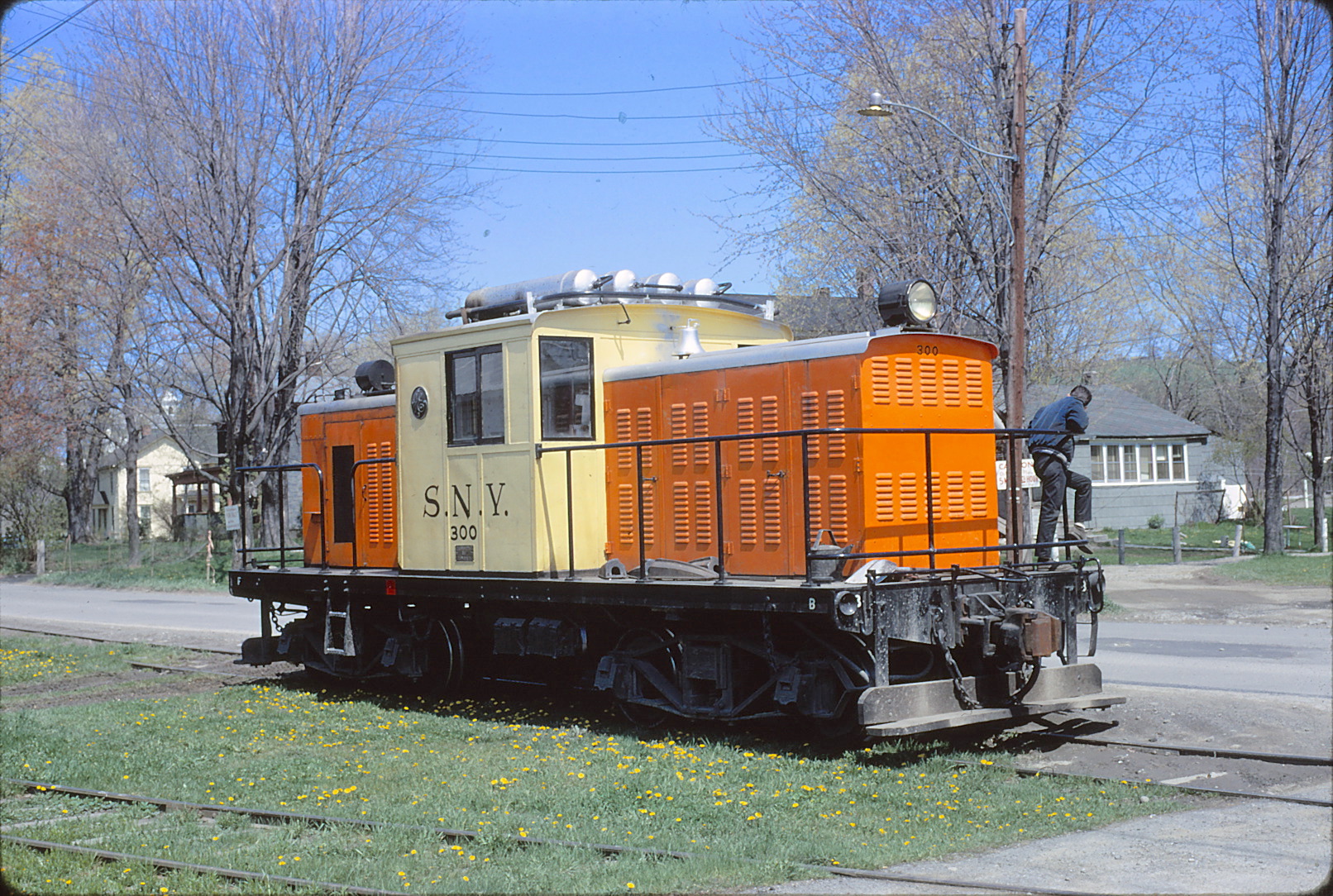
Southern New York #300 at Oneonta, New York
Raymond Muller photo (13 May 1967)
- Thin frame deck
- Large boxy cab with air compressor tubes on roof
- Large headlight mounted above nose lip
- Cab and hood roof overhangs
- Flat-faced hood with louvers (no radiator opening)
- Single ladder each side centered on truck
- Open frame-trucks with friction bearings
- Built: 1936(?)
|
43-Tonner (March 1939 to July 1939)
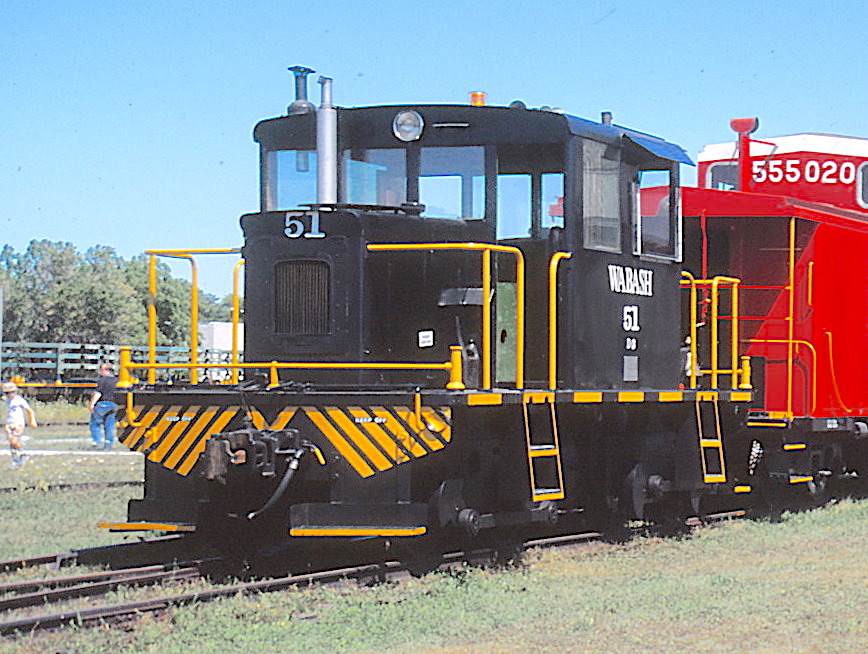
Wabash #51 at St. Thomas, Ontario
Rabo Sabo photo (September 2003)
- Fore-runner of the 45ton model
- Thin frame deck
- Large cab with square windows
- Headlight mounted above windshields
- Cab and hood roof overhangs
- Narrow hood with small screened grille
- Front hand rail extends from sides of hood
- Side-rod trucks
- One or two ladders, each centered on truck
|
45-Ton (December 1940 to March 1941)
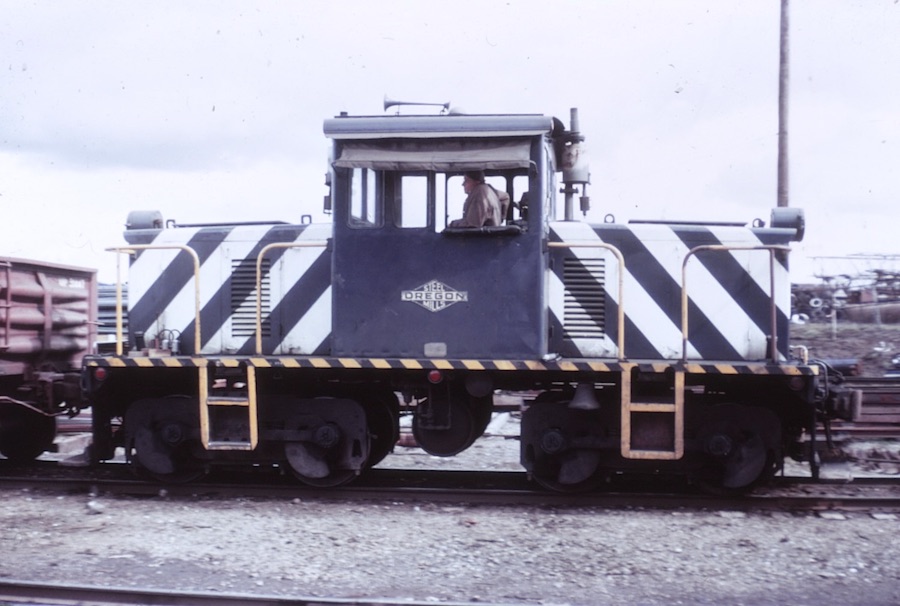
Oregon Steel Mill at xxxxxxx, OR
Photographer unknown
- Thin frame deck
- Shorter cab becomes standard
- Headlight mounted high on nose
- Cab and hood roof overhangs
- Radiator shutters instead of screens (become standard)
- Handrail supports protrude from sides of hood
- Side-rod trucks
- One or two ladders, each centered on truck
- Exhaust stack location standardized in front of cab
|
50-Ton (December 1940 to May 1941)
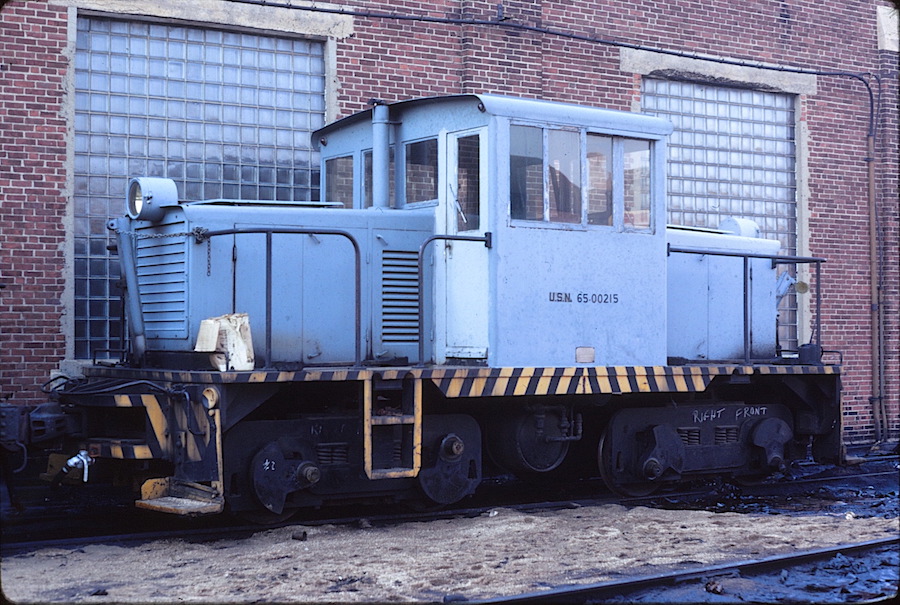
U.S. Navy 65-00215 at Summerville, Maine
George Turnbull photo (October 1971)
- Closely resembles a 45-tonner
- Standard cab
- Radiator shutters
- Short bevelled-edge frame skirts (2-1/2 tons) between trucks
|
45-Ton (March 1941 to August 1943)
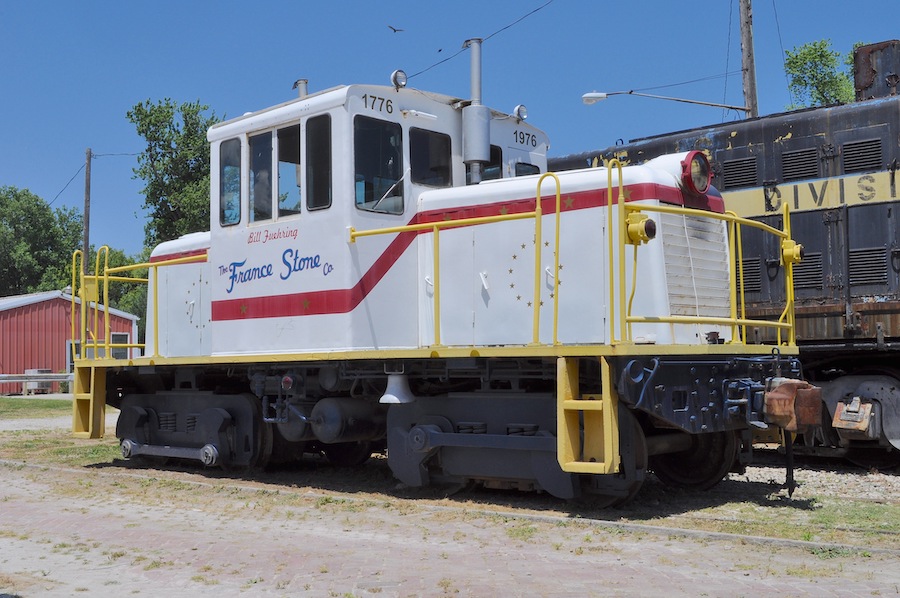
France Stone at Bellevue, Ohio
RCraig photo (June 2007)
- Thin frame deck
- Standard cab
- Headlight sculptured into rounded-nose edge
- Standard radiator shutters
- Handrail entire width of locomotive
- Side-rod trucks
- One or two ladders, each centered on truck
|
45-Ton (September 1943 to August 1946)
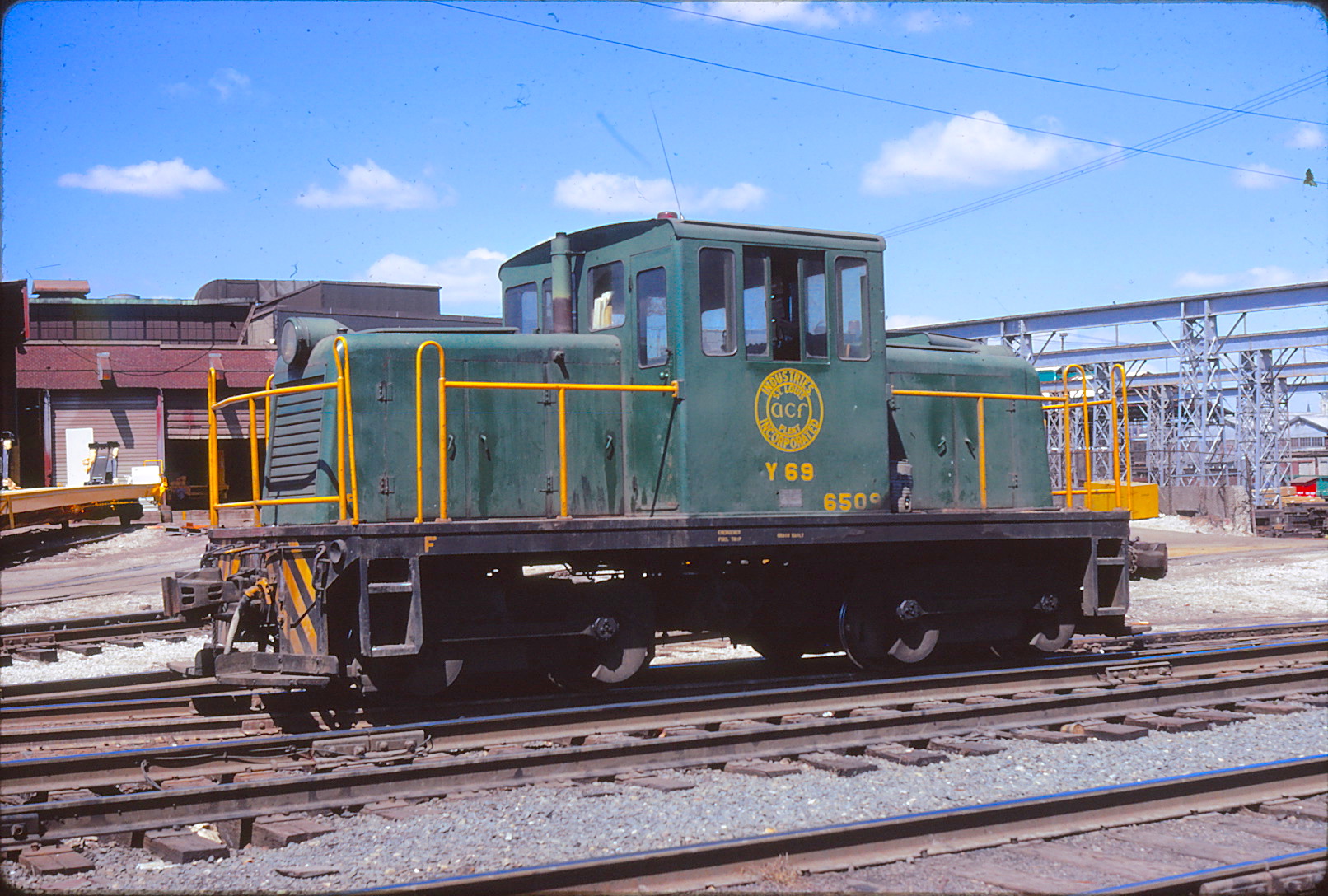
ACF Industries #Y69 at St. Louis, Missouri
R.R. Wallin photo (April 1971)
- Full-length frame skirt, becomes standard
- Standard cab
- Headlight sculptured into nose of hood
- Standard radiator shutters
- Handrail entire width of locomotive
- Side-rod trucks
- Single ladder each side centered on truck (two ladders for later builds)
|
"45-Ton" Drop Cab (October 1943 to Nov. 1944)
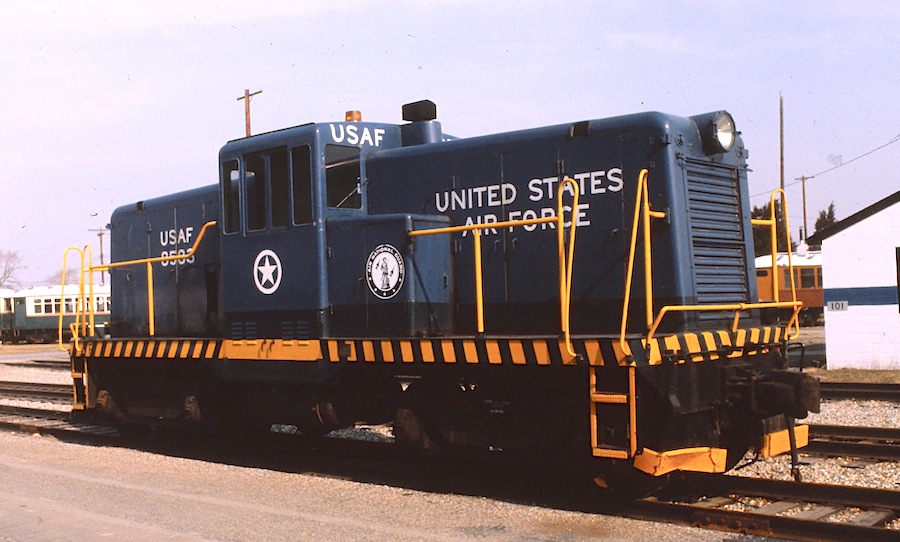
USAF 8503 at Michigan Air National Guard Base
Jim Koglin photo (June 2008)
- 44-tonner ballasted to 45 tons
- Dropped cab with no windows above hoods
- Headlight level with top edge of nose
- Standard equalized trucks (one traction-motor per axle)
- Handrail supports protrude from hood
- Air compressor moved to large deck-mounted box
|
50-Ton (Late 1945 to Mid 1946)
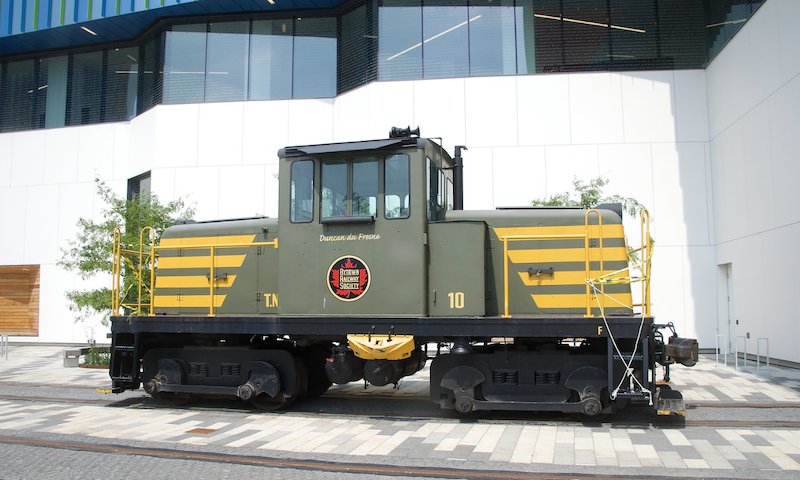
CN 10 (nee Singer Mfrg) at ByTown Rwy Society (Ottawa)
Michael Berry photo (October 2021)
- Standard carbody configuration
- Full-length frame skirt
- Side-rod trucks
- Air compressor box mounted on frame deck in front of cab (only a few built)
|
50-Ton Drop Cab (1943 to 1947)
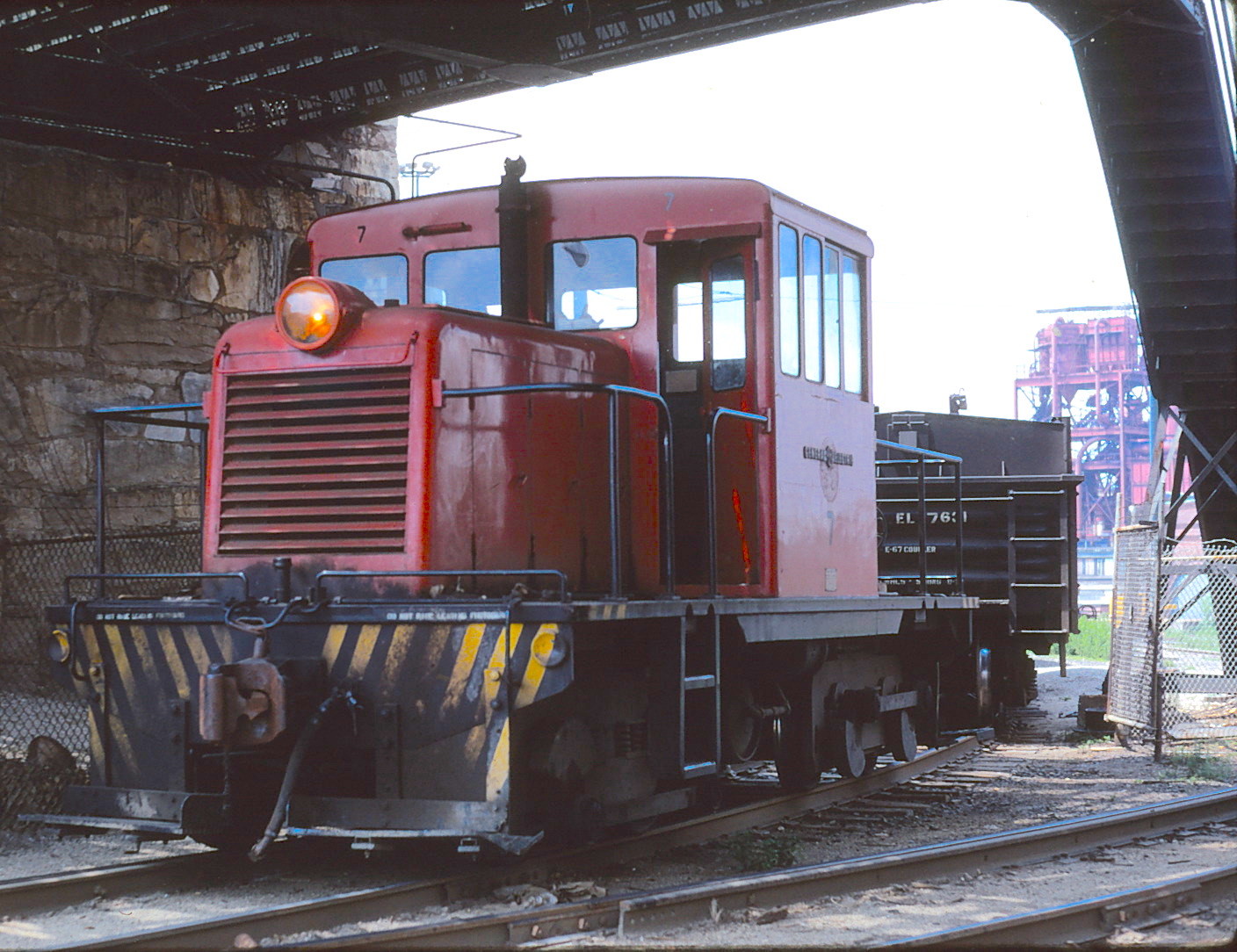
General Electric #7 at Pittsfield, Massachusetts
George Turnbull photo (April 1968)
- Standard carbody configuration
- Short bevelled-edge frame skirts (2-1/2 tons) between trucks
- Side-rod trucks
|
50-Ton (1947 to 1961)
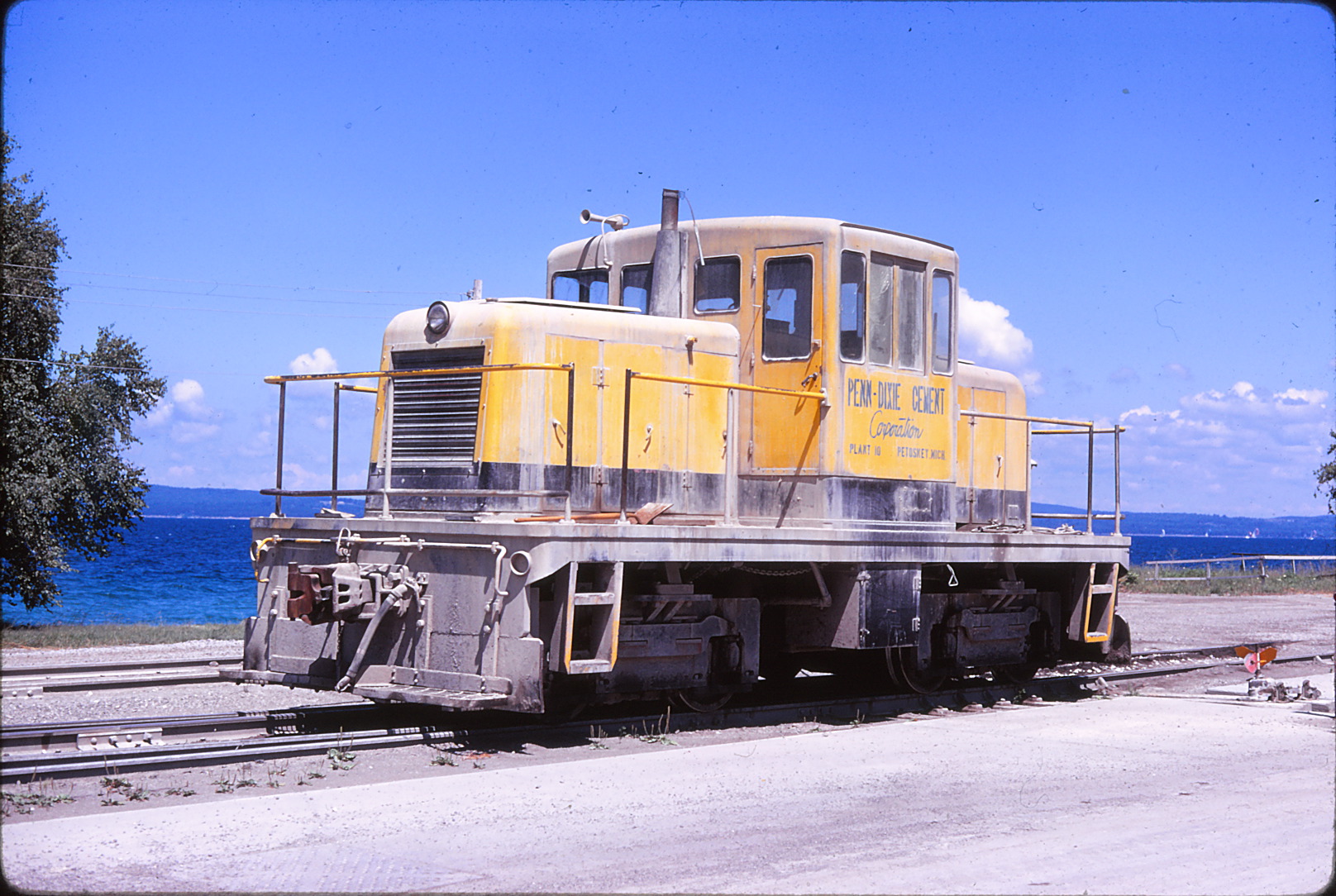
Penn-Dixie Cement at Petoskey, Michigan
Denny Custer photo (August 1969)
- Standard carbody configuration
- Full-length frame skirt
- Side-rod trucks
- Thin (3/4") bedplate beneath cab and hoods
|
45-Ton (September 1947 to February 1961)

US Gypsum #104 at Alabaster, Michigan
RCraig photo (May 1967)
- Full-length frame skirts
- Standard cab with rounded corners
- Small seal-beam headlight
- Radiator shutter area reduced in size
- Handrail entire width of locomotive
- Chain-Driven trucks
|
45-Ton (November 1959 to April 1975)
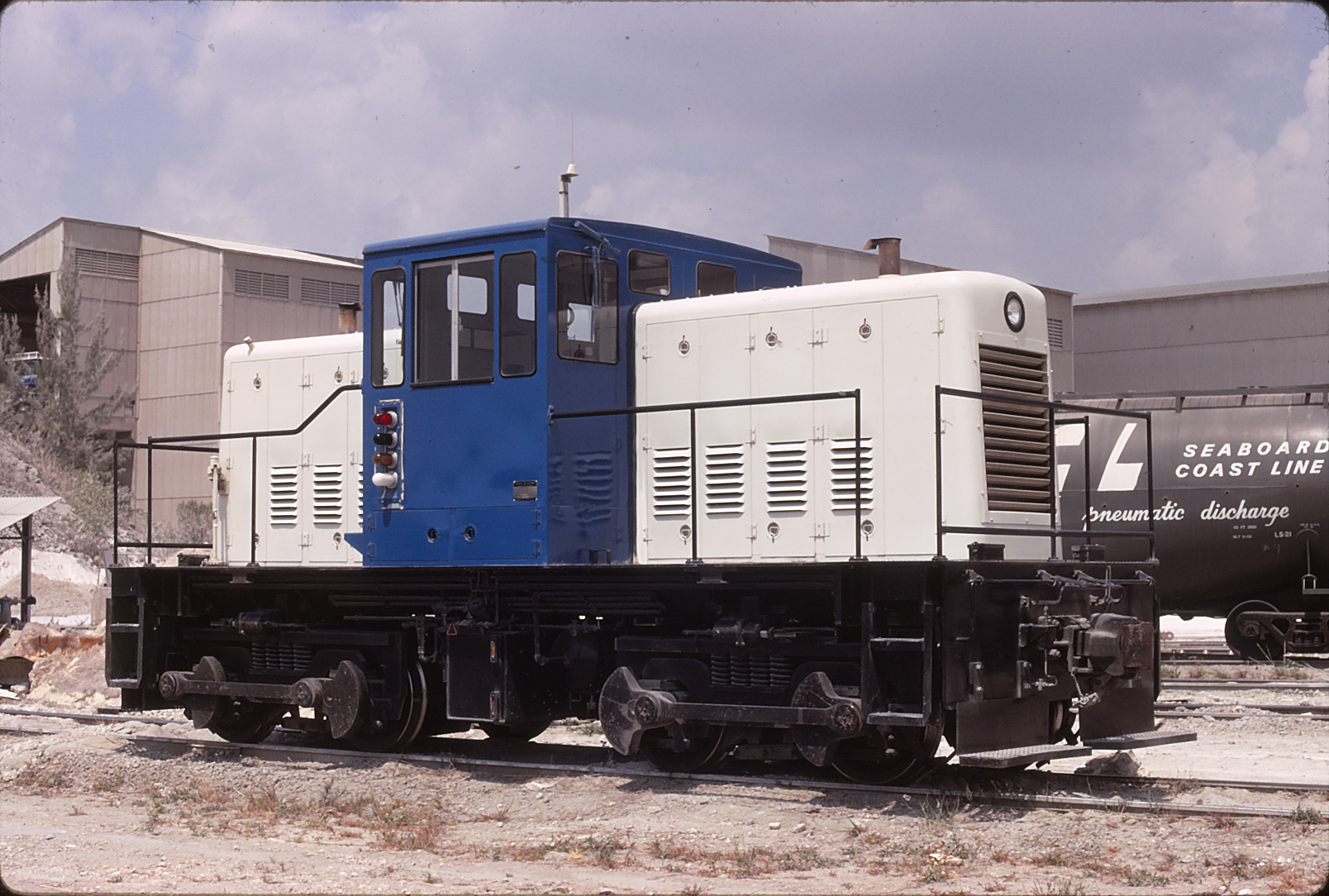
Lehigh Portland Cement no# at Miami, FLA
Photographer unknown (June 1971)
- Thin Deck Plate
- Squarish cab with small windows above hood
- Narrow tall hoods
- Engine exhaust moved well forward on top of hood
- Four sets of louvers on engine access doors
- Side-rod (or chain-driven) trucks
|
Notes and Reference sources:
- Critters, Dinkys & Centercabs by Jay Reed
- Flickr.com
- The Second Diesel Spotters Guide by Jerry A. Pinkepank
- Locomotive Encyclopedia (1956) by Simons-Boardman
|
| Formatted by: R.Craig
Expanded: 4 September 2023 / New: 1 December 2019
|












